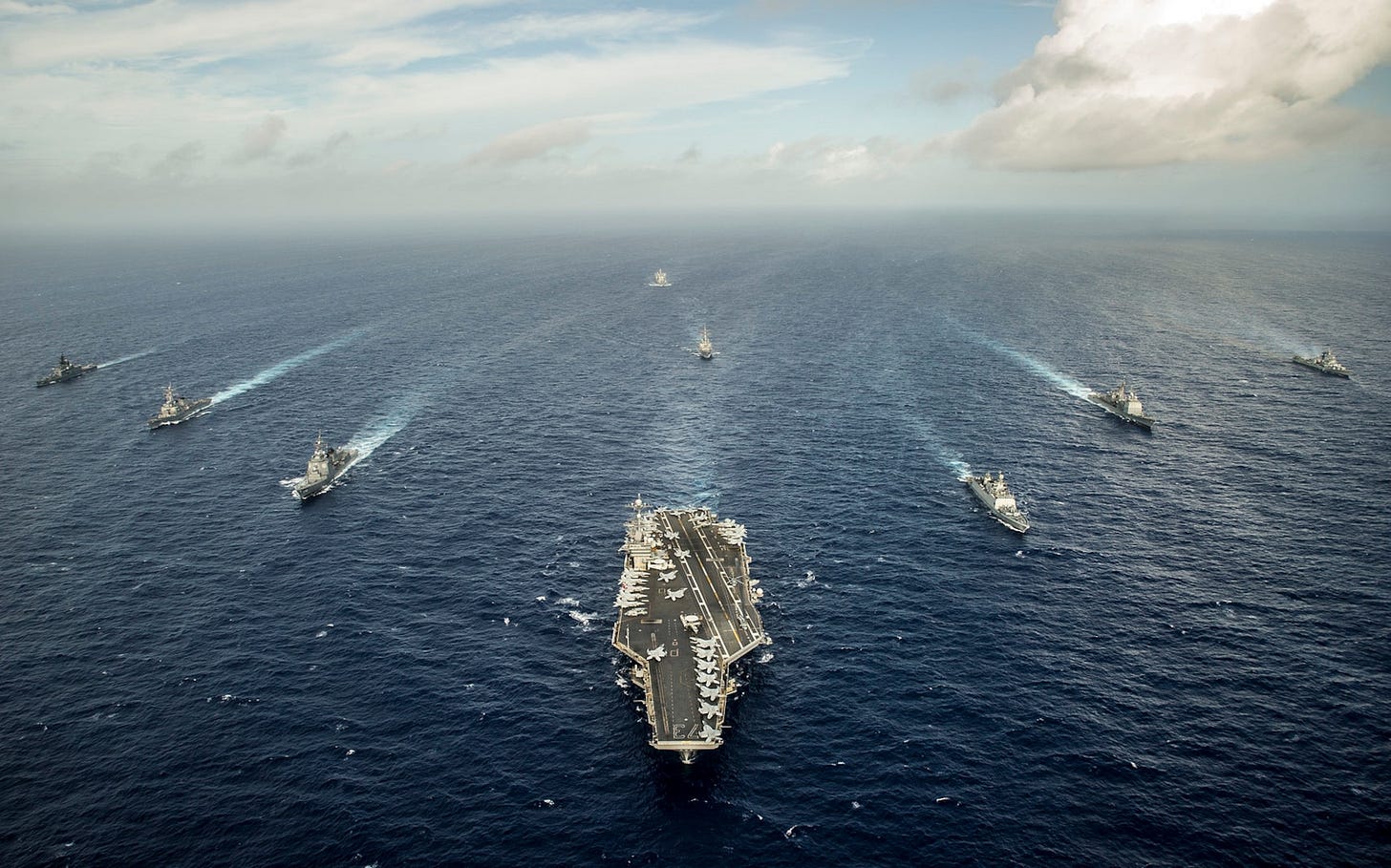Review: Southeast Asia Stakes in Indian Ocean Contested Futures
How shifting maritime dynamics are driving great power competition in the Indo-Pacific and beyond, with implications for Southeast Asia's trajectory.
A new book sheds light on the wider stakes for Indo-Pacific regions such as Southeast Asia in what will be an increasingly contested and complex Indian Ocean theater amid intensifying great power competition.
WonkCount: 1,779 words (~8 minutes)
Review: Southeast Asia Stakes in Indian Ocean Contested Futures
Context
“This commemoration is both a moment for reflection and a testament to our collective resilience,” ASEAN Secretary-General Kao Kim Hourn noted during the recent 20th anniversary commemoration of the 2004 Indian Ocean Tsunami by the regional grouping earlier this month1. The disaster, which killed over 200,000 people across more than a dozen South and Southeast Asian countries, was a sobering reminder of cross-regional dynamics at play in the Indo-Pacific region and ushered in key developments including the origin of the first iteration of the Quad minilateral grouping. Periodic cross-regional datapoints have also surfaced in years since, with cases in point being the wider Red Sea crisis which first broke out in October 2023 as well as the proliferation of Indo-Pacific outlooks which has also seen ASEAN ink pacts with the Indian Ocean Rim Association and the Pacific Islands Forum.
Select Key Recent Developments Between the Indian Ocean and Southeast Asia
A new book The Contest for the Indian Ocean by scholar Darshana Baruah analyzes wider stakes for Indo-Pacific regions such as Southeast Asia in what will be an increasingly contested and complex Indian Ocean theater2. The book makes the case for thinking of the Indian Ocean as an integrated cross-continental theater with connections to most of the world’s major trade routes “from the Red Sea to the Indonesian straits,” taking into account past links like southern Indian kingdom invasions into the Malay archipelago as well as future cross-regional sectoral trends in areas such as undersea cables also increasingly salient in Southeast Asia3. In doing so, it builds on a list of book-length studies touching on Indian Ocean dynamics. These include Sugata Bose’s A Hundred Horizons; Robert Kaplan’s Monsoon; Michael Pearson’s The Indian Ocean; and C Raja Mohan’s Samudra Manthan — a reference to a tale from Hindu mythology on the churning of the ocean that those who frequent Thailand would have seen depicted at the country’s Suvarnabhumi Airport4.
Analysis
The book presents a refreshingly comprehensive view of the Indian Ocean as an integrated geographic space at the heart of Indo-Pacific competition, with important implications for regions like Southeast Asia. The Contest for the Indian Ocean provocatively warns that a narrow emphasis on future conflict scenarios in Taiwan or the South China Sea may obscure the reality that the Indian Ocean is likely to be the decisive theater in competition with China, rather than just a springboard for India’s engagement with regions like Southeast Asia via pathways like its Act East Policy.5 That bold assertion is rooted in proliferating theater dynamics that extend beyond China’s expanding dual use facilities or the growing U.S. “latticework”6. These include cross-regional impacts of actions by diverse island nations and territories in sectors like the blue economy — a priority in Southeast Asia’s maritime context — as well as the role of increasingly interested powers like Australia, Indonesia, Japan and Saudi Arabia, in addition to traditional ones like India7. “In the context of a competition (not a conflict), the Indian Ocean is likely to emerge as the theater and the ocean where much of this competition will be decided,” the book argues8.
The Contest for the Indian Ocean also forecasts how evolving geopolitical and geoeconomic dynamics is likely to affect specific policy areas that are important to watch and will be of interest to scholars, policymakers and businesses alike (see table below for a summary of these priority areas, along with major issues to watch and notable details. Paying subscribers can also read the rest of the “Analysis” section and “Implications” section looking at how these dynamics play out in the future as usual).





